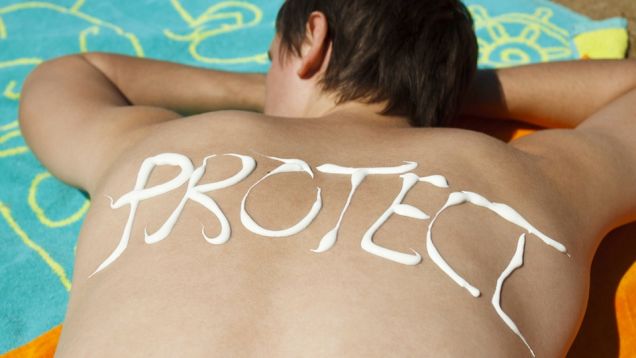News
May 13, 2015
By Nuritas
Sun Damage in the Dark – Yes, in the Dark!

*This blog post was originally posted as a guest post on Chemists Corner on May 12, 2015.
By Meaghan Lee-Erlandsen and Dr. Nora Khaldi
We at Nuritas™ have always thought that sun damage occurred during sun exposure and ended immediately after returning indoors. To our surprise, recent research published in Science and conducted by Prof. Douglas E. Brash, Clinical Professor of Therapeutic Radiology and Dermatology at Yale School of Medicine, and co-authors, shows that most sun damage occurs hours after exposure, even in the dark!
As many of us know, too much sun exposes the body to high amounts of ultraviolet radiation (UV) which damages the DNA in melanocytes, the cells that make melanin (melanin is what gives your skin its color). What we didn’t know is that most of this damage happens hours after sun exposure.

This DNA damage is a major cause of skin cancer and in sunny places such as Australia it accounts for 80% of all newly diagnosed cancers[1]. Indeed, two in every three Australians will be diagnosed with skin cancer by the age of 70[2] . This of course is not limited to warm countries as one may unfortunately underestimate the effects of UV on the skin in areas where clouds are a common feature (UV light can go through clouds) or in colder regions with sunny skies. Indeed, one in every three cancers diagnosed globally is a skin cancer[3]. We wanted to understand a little more of Prof. Brash’s recent finding and thus asked him to provide us with a layman’s summary of this work as well as tell us if he forecasts any possible solutions.
Prof. Brash explains
![]() My co-authors and I found that the ultraviolet radiation interacts with melanin to cause cyclobutane dimers for hours after the UV exposure ends. A cyclobutane dimer occurs when two adjacent ‘letters’ in DNA attach to each other and bend the DNA, preventing the information inside the DNA from being read correctly which is the start of DNA damage. We found that nearly half of the DNA damage associated with the cyclobutane dimers occurs after sun exposure.
My co-authors and I found that the ultraviolet radiation interacts with melanin to cause cyclobutane dimers for hours after the UV exposure ends. A cyclobutane dimer occurs when two adjacent ‘letters’ in DNA attach to each other and bend the DNA, preventing the information inside the DNA from being read correctly which is the start of DNA damage. We found that nearly half of the DNA damage associated with the cyclobutane dimers occurs after sun exposure. ![]()
More precisely he explains that what was ultimately happening during this process was that the UV rays activated two enzymes that combined to excite an electron in the melanin, the energy generated from this excitation (known as chemiexcitation) was then transferred to the DNA, thus creating the same DNA damage that sunlight had caused hours before. This type of excitation of electrons has only been previously seen in smaller marine animals and bacteria.
So is this a dead end, or could there possibly be some solutions? Prof. Brash thinks that this is not all bad news. The slow pace of these events provides an opportunity for products and creams that may be able to intervene in this process and eventually block this chemical reaction from happening.
At Nuritas™, we find this groundbreaking research incredibly important as further information and understanding of one of the most common cancers in the world is vital to finding healthy and innovative treatments for all stages of its development. Perhaps in the near future our sun creams will contain an added ingredient that will inhibit the long-lasting effects of UV, perhaps these ingredients could be peptides!
Here’s to keeping your skin safe and enjoying a happy and healthy sun-filled summer!
1. http://www.cancer.org.au/about-cancer/types-of-cancer/skin-cancer.html
2. http://www.cancer.org.au/about-cancer/types-of-cancer/skin-cancer.html
3. http://www.who.int/uv/faq/skincancer/en/index1.html





 Previous
Previous
